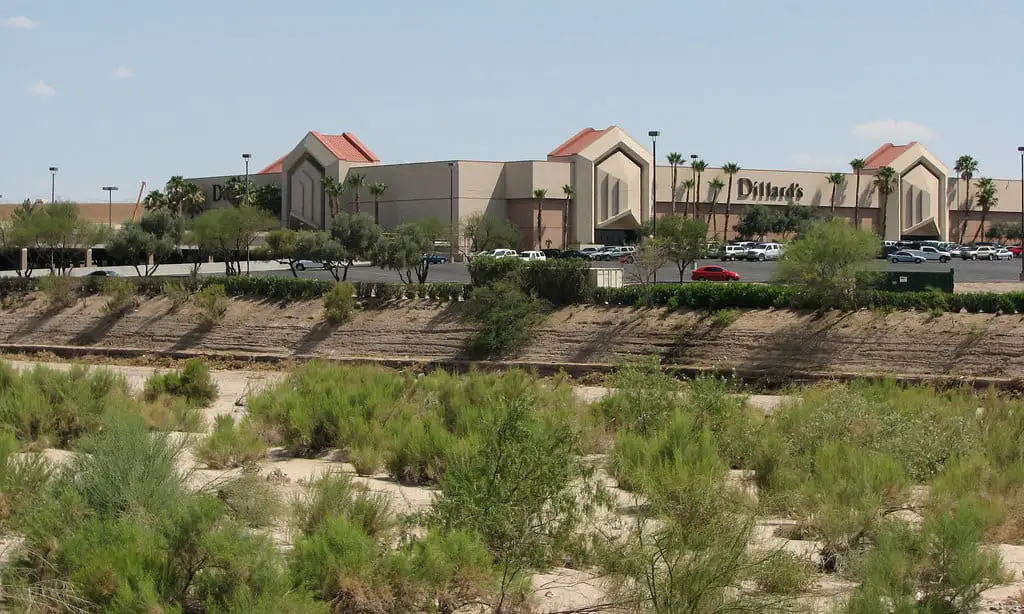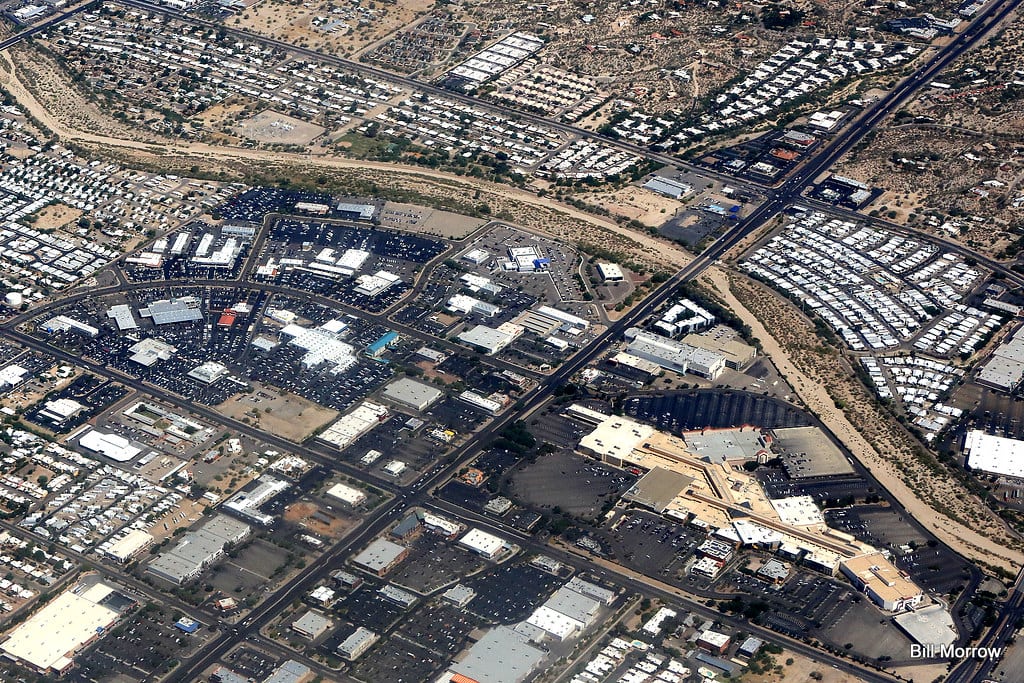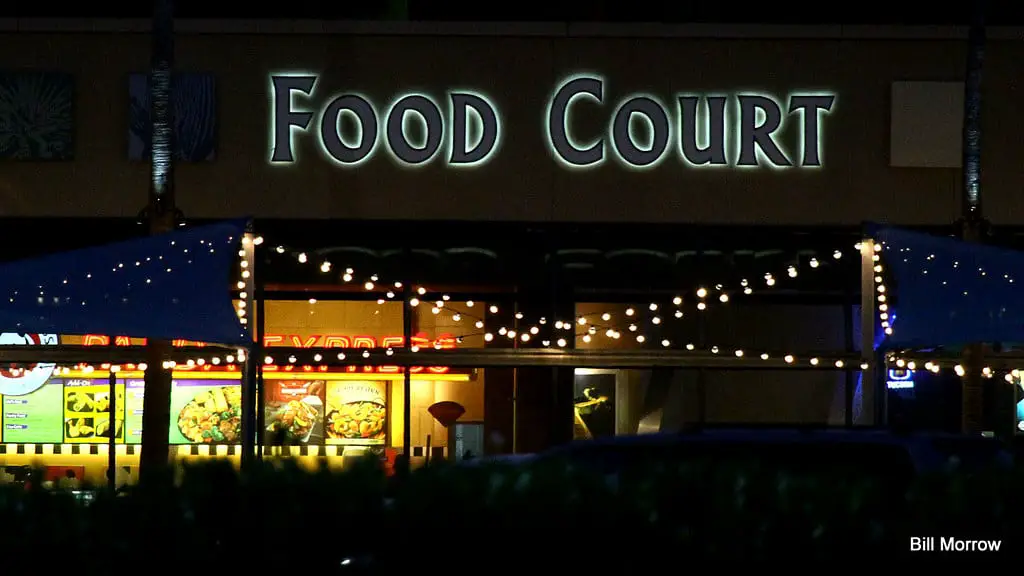The Origins of Tucson Mall
The Tucson Mall opened its doors on March 22, 1982, marking a new era for shopping in Tucson, AZ. Situated at 4500 North Oracle Road, the mall originally opened with approximately 100 retail outlets and five anchor department stores, such as Mervyn’s, Sears, JCPenney, Diamond’s, and Broadway. These were the places where Tucson locals found everything from the latest fashion to household appliances.
The mall was developed by Forest City Enterprises, a company that has been instrumental in shaping retail landscapes across the United States. The mall is managed and owned by Brookfield Properties, a global real estate services company. Ownership may have changed, but the mall’s significance in the community has remained constant.
But let’s step back and talk about the land where the mall stands today. Helen Wetmore, a family member who had settled the ground in the late 19th century, was the driving force behind the creation of Tucson Mall. The Wetmore family saw the potential for a shopping hub that could serve the growing Tucson community.
Over the years, the mall has seen several transformations, but its roots remain deeply connected to the Wetmore family’s vision. It’s a place that has been part of the community for decades, and its history is interwoven with the fabric of Tucson itself.
The Mall’s Evolution Over the Years
In 1990, Tucson Mall underwent its first significant expansion. This project added over 400,000 square feet to the mall and introduced a sixth anchor store, Houston-based Foley’s, in 1991. This expansion was more than just added space; it was a rejuvenation that brought in new energy and more shopping options for Tucson residents.
The mall didn’t stop evolving there. 1993, the food court was given a facelift, offering shoppers a more modern and comfortable dining experience. Then, in 2003, a $15 million overhaul took place. This was the first significant renovation since its opening and included interior design, lighting, and signage updates.
Anchor stores have always been a big part of any mall’s identity, and Tucson Mall is no exception. Over the years, several changes have occurred. For instance, Diamond’s transformed into Dillard’s in 1984, and Foley’s became Macy’s in 2006. These changes have kept the mall fresh and relevant, adapting to the retail landscape and consumer preferences.

So, if you’re looking for things to do in Tucson, Arizona, taking a nostalgic walk through Tucson Mall to see its transformations over the years could be a delightful trip down memory lane. It’s not just about shopping; it’s about witnessing a piece of Tucson’s evolving history.
Current Anchor Stores: The Pillars of Tucson Mall
The anchor stores at Tucson Mall are more than just large retail spaces; they are the pillars that uphold the mall’s reputation as a comprehensive shopping destination. As of 2023, the mall boasts five major anchor stores: Macy’s, JCPenney, Forever 21, Dillard’s, and Old Navy. Each store brings its unique flavor to the mall, catering to a diverse range of shopper needs and preferences.
Forever 21 is the go-to spot for fashion-forward youth, offering trendy clothing and accessories at budget-friendly prices. It’s where you can find the latest styles without emptying your wallet. On the other hand, JCPenney is a multi-department store offering everything from clothing and footwear to home furnishings. It’s a versatile store that makes shopping convenient for families.
Macy’s adds a touch of luxury to the mall with its upscale fashion, beauty, and home goods offerings. Known for its quality and brand-name items, Macy’s is where you can indulge in luxury. Dillard’s complements this by offering a curated selection of high-end fashion, cosmetics, and home essentials. It’s the destination for those who appreciate quality and are willing to invest in it.
Last but not least, Old Navy completes the anchor lineup focusing on affordable, everyday fashion for the whole family. From casual wear to activewear, Old Navy offers a wide range of stylish and budget-friendly options. It’s the perfect place to update their wardrobe without straining their finances.
Together, these five anchor stores create a balanced and diverse shopping environment. They are the cornerstones that attract a steady flow of shoppers, providing a stable foundation for the smaller retailers in the mall. With such a strong anchor lineup, Tucson Mall continues to be a leading shopping destination in Tucson, Arizona.

Current Tenants and Offerings
Fast forward to today, and Tucson Mall is a hub with over 150 stores and services. The mall offers various retail options, from fashion-forward stores like American Eagle Outfitters to specialty shops like the Arizona Wildcats Store. It’s a one-stop shop for all your retail needs.
The mall has you covered when it comes to satisfying your taste buds. The food court features a variety of options, from Charleys Grilled Subs for those craving a hearty sandwich to Panda Express for fans of quick and delicious Chinese cuisine. There’s something for every palate.
But the mall isn’t just about shopping and eating. It also offers a range of services and entertainment options. Need to get your watch repaired? Head over to Arizona Watch & Jewelry Services. Looking for some fun? Joystick Arcades offers a variety of games that can keep you entertained for hours.
Tucson Mall is more than just a shopping center; it’s a community space offering something for everyone. Whether you’re out for a shopping spree, looking for a quick bite, or needing specific services, this mall has it all.

The Mall’s Economic Impact
Tucson Mall is not just a retail space; it’s a significant contributor to the local economy. With over 150 stores and services, the mall provides employment opportunities for many Tucson residents. It’s a hub of activity that keeps the economic wheel turning.
The mall’s presence has a ripple effect on surrounding businesses and services. From nearby restaurants to local artisans selling their crafts, many benefit from the foot traffic generated by the mall. It’s a symbiotic relationship that enriches the community as a whole.
Tourism also plays a role in the mall’s economic impact. As the largest mall in Tucson, it is an attraction for visitors to the city. Tourists often find themselves exploring the mall, contributing to its revenue and, by extension, the local economy.
So, the next time you visit Tucson Mall, remember you’re not just a customer but part of a larger community. Your patronage helps sustain jobs, supports local businesses, and contributes to the overall well-being of Tucson.
The Future of Tucson Mall
Consumer trends are shifting, with online shopping becoming more prevalent. However, Tucson Mall offers experiences you can’t get online. From in-store promotions to community events, the mall is more than just a place to shop; it’s a place to connect.
Plans for the mall are not just about retail spaces and food courts. There’s a focus on community engagement, with events and activities that aim to make the mall a more integral part of the Tucson community. From holiday celebrations to charity events, Tucson Mall aims to be a hub of community activity.
Tucson Mall continues to adapt, evolve, and serve the Tucson community, just as it has for over four decades. It’s where memories are made, the community gathers, and the future looks bright.
